![]() Watch rowing on television or in person and it looks like the most gracious sport possible, with the boats gliding through the water smoothly and the crew working together as one. Much as the cliché about swans swimming dictates that the real work goes on under the water out of our view, so too does the watching of a rowing race belie the fact that it is incredibly hard work. Anyone who has used a rowing machine in a gym will know just how hard it is physically, asking you to push your body to its maximum with every stroke.
Watch rowing on television or in person and it looks like the most gracious sport possible, with the boats gliding through the water smoothly and the crew working together as one. Much as the cliché about swans swimming dictates that the real work goes on under the water out of our view, so too does the watching of a rowing race belie the fact that it is incredibly hard work. Anyone who has used a rowing machine in a gym will know just how hard it is physically, asking you to push your body to its maximum with every stroke.
In competitive rowing the participants have to do that from the first minute and can’t relent until the last, following the instructions of the cox as they call out when to pull and how much in order to keep the boat on its line.
With boats ranging from single-person to those large enough to welcome eight rowers plus the coxswain, it can be thrilling to watch as well as take part in. The oars propel the boats through the water and the one that gets to the finish line first without breaking any rules of the race will win. Perhaps the best example of a simple sport that makes huge demands of those taking part in it.
Leading Bookmaker For Betting On Rowing
BetVictor

BetVictor are known as a more professional and traditional bookie and with rowing being a very traditional sport the site has very good markets and depth.
There are many brands that cover the Oxford and Cambridge rowing race each year and the Olympics but often only with outright markets and outside of those events there is little else on offer.
BetVictor however cover more events more often and when they do they also provide greater depth on pre-race bets an more lines in-play once the races start.
How To Bet On Rowing Races
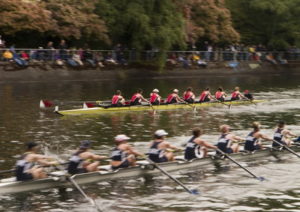 When it comes to betting on rowing, you’ll almost certainly find that the majority of bookmakers will only really offer you the most simplistic of bets such as pre-race offerings on which team or rower is going to win.
When it comes to betting on rowing, you’ll almost certainly find that the majority of bookmakers will only really offer you the most simplistic of bets such as pre-race offerings on which team or rower is going to win.
There are other bets that can sometimes be placed, however, such as Bets 1-3, which is a bet on the first three rowers to take the places in a race in a similar way to a bet on a horse race. Some bookies will also offer you the chance to bet on which squad will end an event with the higher classification.
As always, doing your research is about the most important thing you can do when it comes to placing bets on rowing events. Knowing whether competitors have taken part in the event before, have a history with a particular type of event or have a head-to-head record with their fellow competitors can make all the difference.
The History Of Rowing
From Transportation To A Leisure Pursuit
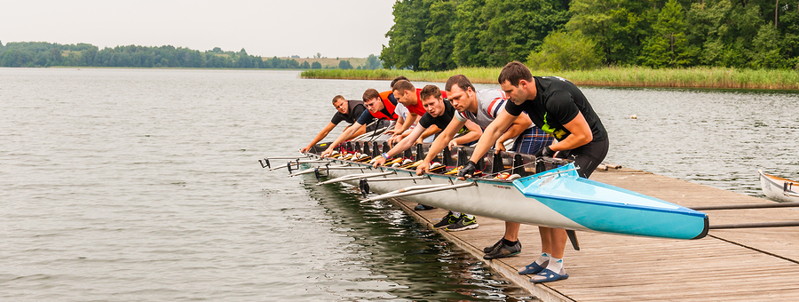
When looking at the history of rowing as a sport its important to draw a distinction between the modern day version, which can trace its origins to the United Kingdom in the 10th century and the idea of rowing in a boat that has been around since the days of the ancient Egyptians.
It began as a method simply of moving across water, often used for transportation, before being adapted to allow it to be used in wars. Yet almost since the first moment that a boat has been road has it enjoyed a competitive element.
There are records from 1430 BC that describe the Egyptian warrior Amenhotep as an accomplished oarsman, for example, whilst Virgil describes rowing when talking about the funeral games in the Aeneid.
The modern day regattas take at least some inspiration from Venetian festivals known as regata, which included competitive boat races. Yet the reason we draw a distinction between these ancient forms of boat racing and the more modern version of the sport is that they are different enough from each other to suggest that they might as well not even be related.
The Early Days Of Modern Racing
T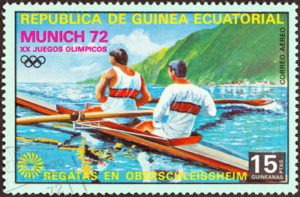 he origins of the modern day rowing race can be traced back to the time of water taxis in London, when watermen were professionals and would race against each other in the hopes of winning prizes put forward by the London Guilds and Livery Companies. Sometimes such prizes would also be offered by the owners of riverside houses that were wealthy, with the races becoming so popular that crowds would line the riverbanks to watch them during the 19th century.
he origins of the modern day rowing race can be traced back to the time of water taxis in London, when watermen were professionals and would race against each other in the hopes of winning prizes put forward by the London Guilds and Livery Companies. Sometimes such prizes would also be offered by the owners of riverside houses that were wealthy, with the races becoming so popular that crowds would line the riverbanks to watch them during the 19th century.
One book from the time lists 5,000 races that took place on the River Thames between 1835 and 1851, showing just how popular the contests were. Soon the races began to spread elsewhere around the United Kingdom to other major rivers, with the Tyne in Newcastle being one of the most commonly used.
Doggett’s Coat and Badge is an example of one such race that used to take part on the Thames, starting in 1715. Indeed, it is the oldest surviving example of a race and used to see rowers travel to Chelsea from London Bridge.
The First Competitions
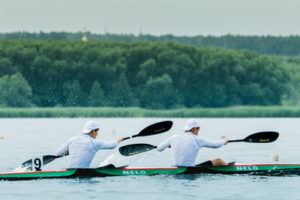 Racing as a competitive enterprise got underway as the 18th century came to a close, with Eton College’s Monarch Boat Club and Westminster School’s Isis Club both being examples of amateur competitions that came about during the 1790s.
Racing as a competitive enterprise got underway as the 18th century came to a close, with Eton College’s Monarch Boat Club and Westminster School’s Isis Club both being examples of amateur competitions that came about during the 1790s.
Soon amateur clubs began to spring up around London, with the Star Club and Arrow Club both being available to amateur rowers before the turn of the century. Oxford and Cambridge Universities began to offer rowing to their students in 1815 and 1827 respectively, with the first Boat Race between the two institutions coming about in 1829.
The Boat Race soon gained enough interest to mean that the nearby town of Henley decided to host a regatta in 1839, which grew in popularity almost immediately and continues to be of interest to this day. At the same sort of time the sport began to grown in popularity in the United States of America, with amateur rowing having taken place there since as early as 1762.
Professionals were going head-to-head in the States before the Civil War had even got underway, often starting and ending the race at the same point in order to allow the ever-growing crowds to watch. Harvard and Yale Universities follows in the footsteps of Oxford and Cambridge by offering an inter-collegiate race in 1852.
Rowing Becomes A Global Concern
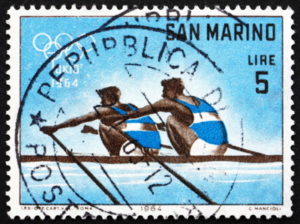 On the 25th of June 1892 representatives from Belgium, France, Italy, Adriatica and Switzerland gathered to form the Fédération Internationale des Sociétés d’Aviron, which would go on to be the governing body for rowing. It remains the oldest international sports federation that is part of the Olympic movement and it organised the first international rowing championship when the European Rowing Championships was founded in 1893.
On the 25th of June 1892 representatives from Belgium, France, Italy, Adriatica and Switzerland gathered to form the Fédération Internationale des Sociétés d’Aviron, which would go on to be the governing body for rowing. It remains the oldest international sports federation that is part of the Olympic movement and it organised the first international rowing championship when the European Rowing Championships was founded in 1893.
Seven years after the creation of the European Rowing Championships and the sport was welcomed in to the Olympic Games, having on the roster in 1896 but cancelled due to poor weather. Remarkably, the first World Rowing Championships didn’t take place for another 62 years when it was held in the city of Lucerne in Switzerland.
During all of this time the sport was mainly male dominated, with women not being allowed to take part in rowing events at the Olympics until 1976. That was many years after women were allowed to compete in the likes of canoeing, Cycling and athletics.
Women And Rowing
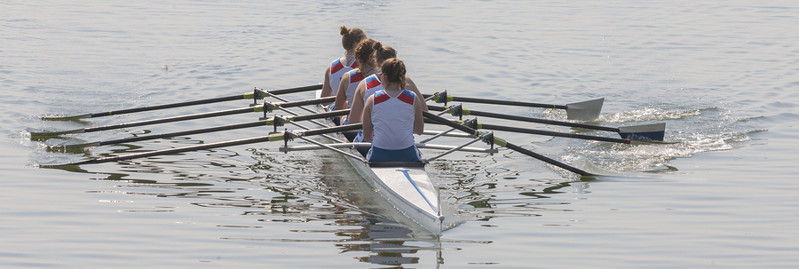
Whilst the Olympics might not have been quick to recognise the female side of the sport, women had been competing in rowing events since the 15th century. In 1493, for example, Beatrice d’Este visited Venic and watched a regatta in which 50 peasant women were allowed to compete. Similarly, female rowers known as Roddarmadam were responsible for the management of the water ferries on the archipelago of Stockholm between the 15th and 19th centuries.
In the more modern era women’s rowing has been popular since the 19th century, with a double skull race featuring female competitors featured on the cover of Harper’s Weekly in 1870. In 1892 four women started up the ZLAC Rowing Club in the city of San Diego, borrowing a boat in order to do so. It is believed to be the oldest rowing club exclusively for women that has been in continued existence ever since.
 In England, meanwhile, the women of Oxford and Cambridge Universities have been racing against each other since 1927, just over 100 years since the men’s event was formed.
In England, meanwhile, the women of Oxford and Cambridge Universities have been racing against each other since 1927, just over 100 years since the men’s event was formed.
The women’s event in the European Championship wasn’t added until 1954, with the Henley Regatta refusing to add women’s racing until 1988, indicating how that side of the sport took its time to gain respect and recognition. Indeed, it wasn’t until 1997 that the Leander Club of Berkshire, which had been founded in 1818 and is one of the oldest such clubs in the world, began to accept female members.
In its more formative years on the international stage women’s rowing was dominated by Eastern European countries like Bulgaria and Romania, but in recent times the more traditional rowing countries such as the UK, America and Canada have begun to assert their dominance.
Rules and How Rowing Works
![]() Rowers sit in their boat facing backwards, with two oars in the water and the handles in the boat. They are held in place by what are known as oarlocks and the athletes use their arms to pull the handles of the oars towards themselves, propelling the boat forwards. They then lift the oars out of the water and push their arms forwards to return the oar to its original position, dropping it into the water in order to start the process all over again.
Rowers sit in their boat facing backwards, with two oars in the water and the handles in the boat. They are held in place by what are known as oarlocks and the athletes use their arms to pull the handles of the oars towards themselves, propelling the boat forwards. They then lift the oars out of the water and push their arms forwards to return the oar to its original position, dropping it into the water in order to start the process all over again.
Whilst obviously requiring strong arms, rowing is a sport that tends to ask questions about the entire physicality of the competitor. Excellent cardiovascular endurance is required, for example, as is the presence of a strong core.
Flexility and general physical strength are also both important attributes of a rower, as well as the ability to listen to instructions. That’s because in the larger boats the coxswain sits at the back of the boat and issues instructions about which side to pull down stronger and how to maintain the rhythm in order to keep the boat going straight and work together.
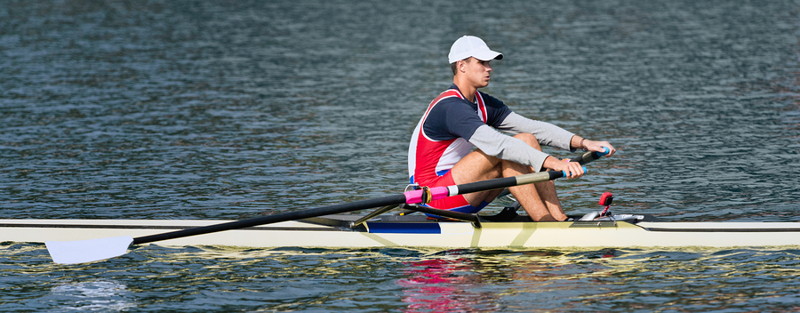
There are predominantly two forms of rowing, known as sculling and sweep rowing. In sweep rowing there tends to be one oar per rower, whilst in sculling they have two as described above. Sculling tends to be done without a cox, and usually involves four, two or solo rowers in the boat.
That is as opposed to the pairs, fours or eights that take part in sweep rowing. The moment the blade of the oar enters the water is known as the catch, whilst the time when it comes out is called the extraction. Some people also refer to it as the finish or release.
Equipment
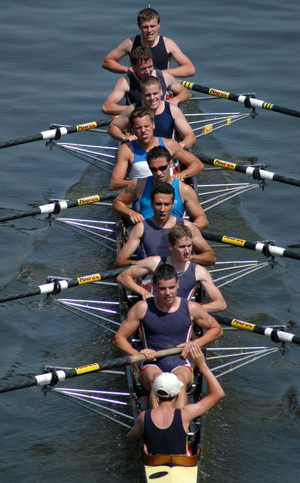 There are really two main pieces of equipment necessary for rowing. The most obvious one is the boat itself, which are referred to as shells and tend to be long and narrow. The choice of hull shape often requires participants to make a choice between stability and the speed of the boat, whilst a fin on the rear of the boat helps to decrease the likelihood of it rolling.
There are really two main pieces of equipment necessary for rowing. The most obvious one is the boat itself, which are referred to as shells and tend to be long and narrow. The choice of hull shape often requires participants to make a choice between stability and the speed of the boat, whilst a fin on the rear of the boat helps to decrease the likelihood of it rolling.
Whilst they were originally made from wood, most boats nowadays tend to be a double-skin made up of a honeycomb material sandwiched between plastic sheets that are reinforced with carbon-fibre. FISA specifies certain criteria that must be met for each class of boat including minimum weight, with the idea being that that will stop a team gaining any sort of an advantage.
Both sculling and sweeping boats are usually identical to each other depending on the number of people that they’re designed for, though they are given different names.
The other vital piece of information is the oar, which tends to be called a blade and is usually between 250 and 300 centimetres for sculling and 340 to 360 centimetres for sweeping. It is also made of a synthetic material, with carbon fibre being common.
The Major Rowing Races
| Event | Information |
|---|---|
| Summer Olympic Games | 14 different boat race types take place during the Summer Olympics, including quad scull, double scull, coxless pairs and others |
| World Rowing Championships | Organised by FISA, this takes place annually in non-Olympic years and is a weeklong set of racing in 21 different classes |
| Henley Royal Regatta | Held annually in the town of Henley on the River Thames, it lasts for five days and attracts crews from around the world |
| World Rowing Cup | This competition began life in 1997 and sees three regattas being held during the summer months. Each stage is usually hosted by a different country |
| The Boat Race | Arguably the most famous boat race of them all, the Boat Race takes place on the River Thames and invites teams from Oxford and Cambridge Universities to compete against each other |
| Harvard–Yale Regatta | First contested in 1952, this is for teams from the men’s heavyweight crews of Yale and Harvard Universities in the US. It takes place every year on the Thames River in Connecticut |
There are different types of rowing events, with head races, bump races and stake races being the most common. The former is essentially a time trial type race, whilst bump races see numerous crews line-up along the river at different intervals which then try to ‘bump’ the boat in front of them.
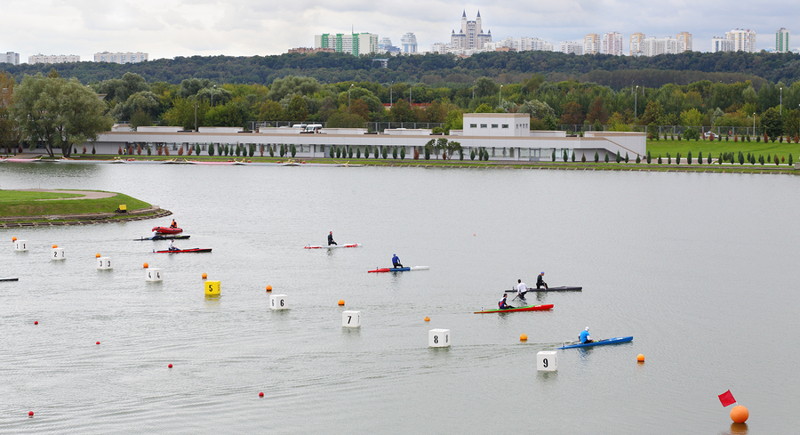
Stake races see competitors race to a stake in the water, turn 180 degrees and then race back. The most famous race type of all, though, are the side-by-side races, wherein the two crews line up equally and try to beat each other to the finish line.
Above we look at the most famous rowing races that occur during the year.
